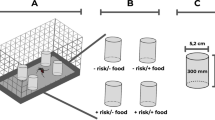Summary
The effects of temperature on growth and development of the cabbage butterfly, Pieris rapae, and three wasp parasites: Apanteles rubecula, Apanteles glomeratus and Pteromalus puparum in Vancouver, Canada, and Canberra, Australia, are examined. We compare the estimates of temperature threshold for development and the number of degree-days above this threshold required to complete development for the immature stages of all species in both localities. Developmental patterns of both the host and its parasites differ between localities. Within the range of temperatures likely to be experienced during the host's breeding season, Australian parasites have longer generation times than their host at low temperatures and shorter generation times at high temperatures. Canadian parasites have shorter generation times, relative to the host, at all temperatures. This may be necessitated by the shorter breeding season available to the Canadian parasites.
Besides temperature, parasite development is affected by host size and, in the gregarious species, parasite density. Host larval development is retarded by both Apanteles.
All parasites are smaller at higher temperatures and males are smaller than females, but size is also affected by host size and parasite density.
Although parasite size, and consequently fecundity, varies greatly, parasites experiencing similar temperatures will have closely similar developmental periods. The ecological significance of these developmental responses is discussed.
Similar content being viewed by others
References
Arnold CY (1960) Maximum-minimum temperatures as a basis for computing heat units. Proc Am Soc Hort Sci 76:682–692
Bouletreau M, David J (1967) Influence of the density of the larval population on the size of the adults, duration of development and the frequency of diapause in Pteromalus puparum. Entomophaga 12:187–197
Campbell A, Frazer BD, Gilbert N, Gutierrez AP, Mackauer M (1974) Temperature requirements of some aphids and their parasites. J Appl Ecol 11:431–438
Frazer BD, Gilbert N (1976) Coccinellids and aphids: A quantitative study of the impact of adult ladybirds (Coleoptera: Coccinellidae) preying on field populations of pea aphids (Homoptera: Aphididae). J Entomol Soc Brit Columbia 73:33–56
Gilbert N (1980a), Comparative dynamics of a single-host aphid. I. The evidence. J Anim Ecol 49:351–369
Gilbert N (1980b) Comparative dynamics of a single-host aphid. II. Theoretical consequences. J Anim Ecol 49:371–380
Jones RE (1977a) Movement patterns and egg distribution in cabbage butterflies. J Anim Ecol 46:195–212
Jones RE (1977b) Search behaviour: A study of three caterpillar species. Behaviour 60:237–259
Jones RE, Ives PM (1979) The adaptiveness of searching and host selection behaviour in Pieris rapae. Aust J Ecol 4:75–86
Jones RE, Hart JR, Bull GD (1982) Temperature, size and egg production in the cabbage butterfly, Pieris rapae L. Aust J Zool 30:223–232
Laing JE, Levin DB (1982) A review of the biology and a bibliography of Apanteles glomeratus (L.) (Hymenoptera: Braconidae). Biocontrol News and Information 3:7–23
Lewontin RC (1965) Selection for colonizing ability. In: HG Baker and G Ledyard Stebbins (eds) The Genetics of Colonizing Species. Academic Press, N Y, pp 77–91
Logan JA, Wollkind DJ, Hoyt SC, Tanigoshi LK (1976) An analytic model for description of temperature dependent rate phenomena in arthropods. Environ Entomol 5:1133–1140
May RM (1976) Estimating r: a pedagogical note. Am Nat 110:496–499
Parker FD, Pinnell RE (1973) Effect of food consumption of the imported cabbageworm when parasitized by two species of Apanteles. Environ Entomol 2:216–219
Pruess KP (1983) Day-degree methods for pest management. Environ Entomol 12:613–619
Rahman M (1970) Effect of parasitism on food consumption of Pieris rapae larvae. J Econ Entomol 63:820–821
Stinner RE, Gutierrez AP, Butler GD (1974) An algorithm for temperature-dependent growth rate simulation. Can Entomol 106:519–524
Author information
Authors and Affiliations
Rights and permissions
About this article
Cite this article
Nealis, V.G., Jones, R.E. & Wellington, W.G. Temperature and development in host-parasite relationships. Oecologia 61, 224–229 (1984). https://doi.org/10.1007/BF00396765
Received:
Issue Date:
DOI: https://doi.org/10.1007/BF00396765




